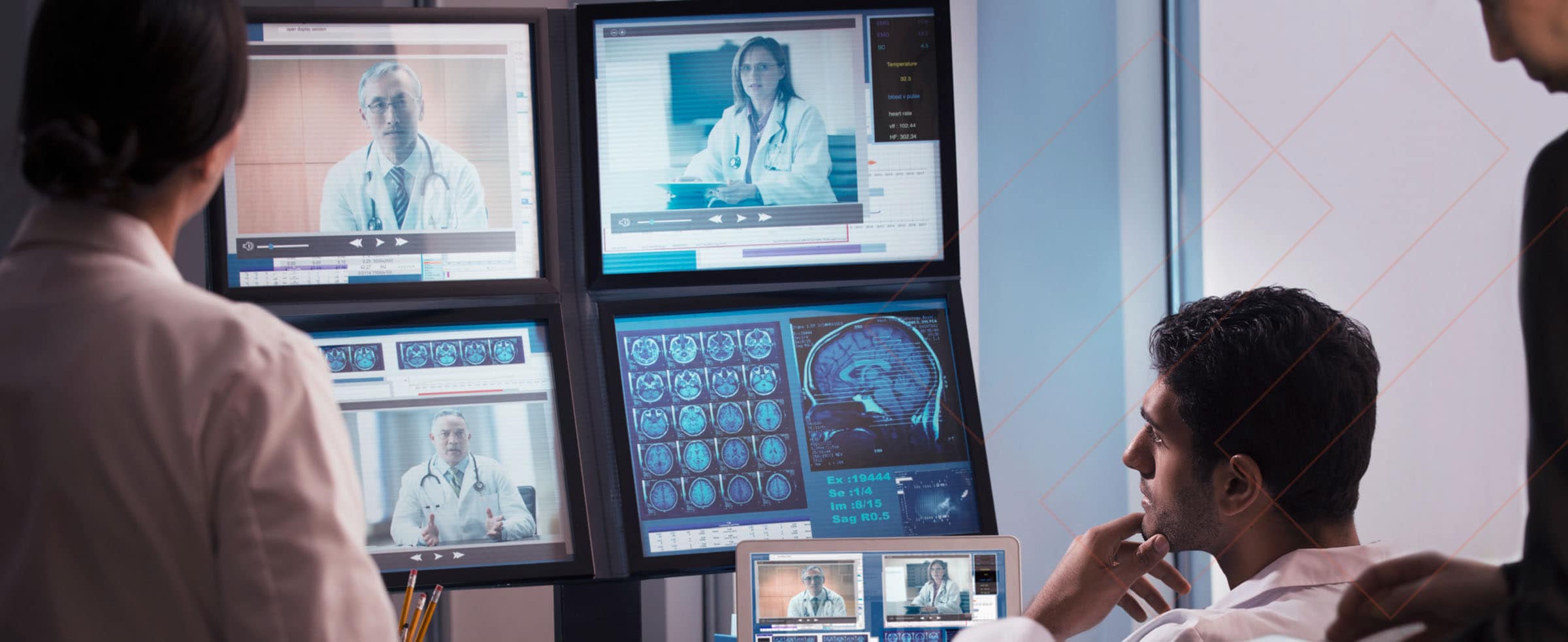Digital innovation continues to improve patient outcomes and accelerate accessibility and equity of care while new digital technologies are empowering patients to engage in their care from anywhere. This profound transformation has enhanced the efficiency and productivity of healthcare professionals to make informed data-driven decisions, coordinate care more effectively, and ensure the continuity of care across multiple medical disciplines. Advanced analytics and AI tools help healthcare providers derive insights from vast amounts of valuable healthcare data. This enables evidence-based decision-making, personalized treatment plans, predictive analytics for population health management, and contributions to clinical research and innovations.
Healthcare IT organizations are now center stage and have a pivotal role in the digital healthcare delivery model. IT must ensure the availability of these digital systems and innovations to deliver care while not compromising patient privacy and the security of patient electronic health and personal data.
In conjunction with the ongoing digital transformation, care locations have undergone significant changes and expanded from the four walls of the acute care setting to ambulatory, telemedicine, and hospital-at-home care settings. While these new care environments are optimizing patient-centric care delivery, they have significantly expanded the surface that needs to be secured by IT organizations.
Top Security Challenges of Healthcare Digital Innovation
Healthcare’s digital transformation has created so many new opportunities, not only for patients and healthcare providers, but also for bad actors. Today, healthcare leaders need to think about:
Continuous Cybersecurity Threats
Due to the vast amount of valuable personal and medical data stored in healthcare providers’ digital systems, cybercriminals are focused on profiting from data theft, life-threatening care disruption, and harassment of healthcare leadership and professionals and even patients through comprehensive attack campaigns. Top observed campaigns leveraged ransomware and supply-chain attacks against exposed and vulnerable systems and services. Phishing continues to be the most common attack vector used, enabling insider threats, both deliberate or unintentional.
Diversity of Connected Devices
Healthcare delivery organizations have the most diverse set of connected devices, which typically fall into three categories:
- Devices managed by IT, such as workstations, servers, laptops, printers, cameras, etc.
- Devices managed by third-party business associatess, such as medical devices, building management systems, etc.
- Unmanageable devices, such as purpose-built fixed state devices that cannot be patched, legacy medical devices that cannot be decommissioned, etc.
Complete visibility of all connected devices and understanding their utilization is challenging due to the new distributed care environment. Even more challenging, implementing consistent preventative security controls to prevent security incidents across the diverse set of connected devices. This makes them a great entry point for cybercriminals to create catastrophic impact to the healthcare environment.
Distributed Applications and Workforce
The flexibility to enable the delivery of care from anywhere breaks established historical centralized security control models. Software as a service (SaaS), hosted applications, and public cloud-resident applications compound the issue with the centralized data center-delivered security stack architectures. To successfully leverage the digital innovations that enable delivery of care from anywhere, there needs to be reliable connectivity and consistent distributed security controls that enable appropriate access to patient data, applications, and services.
Strategy for Safe and Secure Digital Healthcare Transformation
Security needs to be transparent and embedded in the process, enabling digital innovation instead of inhibiting it. Security must be proactive, preventive, and programmatic within a flexible architecture that enables the control of all users, devices, applications, and data regardless of location, while identifying and preventing known and unknown threats in an automated, contextual, data-driven, machine-led fashion. These six security focus areas help healthcare organizations achieve secure and safe digital transformation:
- Implement a Zero Trust strategy. A cybersecurity strategy must eliminate implicit trust and continuously validate any established trust at every stage of their digital interactions through continuous security inspection.
- Secure all connected devices. Any connected device must be automatically identified; its communications, configuration, associated risk, and utilization continuously understood; and preventive security policies enforced that ensure the availability and security of all connected devices.
- Enable care delivery from anywhere. Enable healthcare professionals to securely access patient data and applications to deliver care through a secure access services edge (SASE) that ensures the best digital experience of the clinician and patient.
- Protect all applications and data. Consistent visibility and control of applications and data regardless of locations through a centralized set of security policies.
- Ensure regulatory compliance. Compliance should be continuously validated and achieved through an automated and proactive security approach.
- Maximize integrations and automation. Reduce security tool sprawl and focus on integrated security platforms that deliver automated outcomes. Automating security operations optimizes the use of constrained resources and eliminates analyst burnout.
Security should strengthen your digital transformation efforts, accelerate safe digital innovation, support delivering patient outcomes, and ensure the best experience for both the patient and healthcare professionals. Visit us at paloaltonetworks.com/healthcare to learn more.







